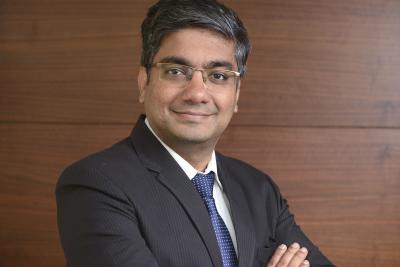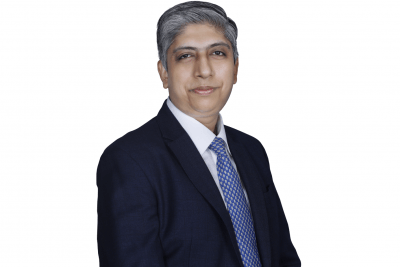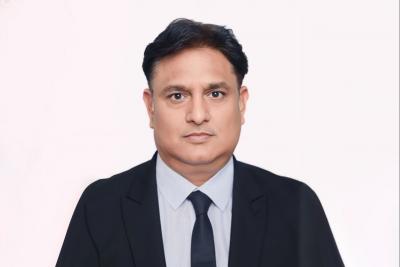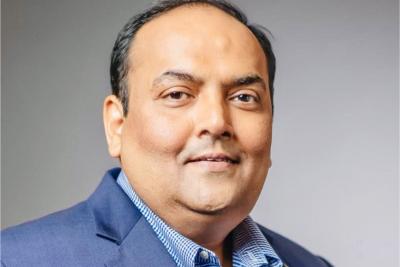Exciting Developments and Great Expectations in India’s Private Wealth Management Market
On June 8, Hubbis assembled a panel of leading personalities in the Indian wealth management market to pinpoint current trends and to predict the more key evolutionary trends for the years ahead. They zoomed in on the incredible potential that India’s wealth management market represents, including even India’s pivotal position between the key wealth centres and economies of Asia and the Middle East. And they outlined where the opportunities lie and what challenges there are for competitors seeking to build or expand their market share. The discussion was immensely positive, with the experts convinced that the market is maturing and that the rapid growth will allow for continuing profitability, even amidst rising pressure on fees from the regulators and from the intensifying competition. But their caveat was that the private banks and independent wealth firms must devise, articulate and deliver optimal strategies and business models that truly work for their teams and for their clients.
Sponsor: Synpulse
The Panel:
- Nitin Singh, Managing Director & CEO, Avendus Wealth Management
- Shiv Gupta, Founder & Chief Executive Officer, Sanctum Wealth
- Yash Shah, Partner, Synpulse
- Prashant Joshi, Co-Founder & Partner, Family Office Advisory, Upwisery
These are some of the questions the panel addressed:
- What themes will shape the industry in the next ten years?
- How is the asset & private wealth management industry evolving?
- What are the challenges?
- How are client expectations evolving?
- Fees, profitability, cost – how do you build the right business model?
- What are the key enhancements the banks and other competitors have been making to their value proposition, products and service offering?
- Are the EAMs and MFOs gaining traction? Why and how?
- With many business families in transition, is estate & legacy planning a growth area, and what do the banks or wealth managers get from their advisory proposition in this area?
- How is technology/digital helping private banks and other wealth management firms engage with and properly service their clients and prospects? What are the key areas of emphasis for the ongoing digital journey?
- Is there rising connectivity from India to the wealth centres of Asia and the Middle East, and what does this mean?
Setting the Scene
In mid-April this year, India’s Sensex equities index was trading around the 60,000 level, whereas in March 2020 in the midst of the pandemic-induced anxiety the Sensex had slumped from over 40,000 to a little over 28,000. So far in 2023, the Index is treading water, but many expect the market to then head off on another upward leg as economic and indeed demographic momentum drives additional optimism and global fund inflows.
The optimism is soundly based on the country’s economic momentum, its remarkably young and dynamic demographics, the spread of wealth across India’s first, second and third-tier cities and regions, and the entrepreneurial creativity across the nation, with technology driving much of the momentum, supported by foreign demand to scramble aboard the future Unicorns India has been minting, and as FDI surged.
At the same time, India’s wealth management market continues its exciting expansion and diversification journey that accelerated in 2021, in the aftermath of the onset of the pandemic. That was perhaps when confidence really set in about the domestic markets, the expansion of private wealth and the dramatic rise of the mass affluent market.
It was also perhaps when a far greater sophistication and diversification of the wealth and advisory proposition began in earnest, encompassing not only mainstream assets but alternatives and private markets, and as wealthy Indian clients focused more attention on evolving their family businesses from traditional to ‘new economy’ investments, and as they focused more attention and energy on structures for estate and legacy planning.
Across the board in India, there is an ongoing diversification and upgrading of private client portfolios as the wealth industry delivers more interesting mainstream products, including mutual funds and ever more ETFs, as well as across the length and breadth of private markets. Meanwhile, the mass affluent sector of the nation continues to expand apace, just as HNW and UHNW wealth keep rising apace.
On the slightly less positive side, there is clearly a shortage of experienced RM and advisory talent to cater to all these private clients, but the banks and the numerous independent wealth firms in India – many of which are now very large indeed – are making ever greater efforts to boost training and to further develop a culture of professionalism in the wealth sector.
And of course, India is a truly vast and immensely populous country, hence the great need for digitalisation, which continues apace, helping the competitors in the wealth industry reach out to the many often huge pockets of client demand in all quarters of the country. The need to differentiate from the competition and pressures from rising costs in all areas are also other key drivers for the thrust towards a far more digital wealth management offering.
Key Insights & Observations from the Experts
The opportunities in India are still vast, growing apace and diversifying for wealth management competitors of all types and focusing on all the key areas of private clients in India
Growth in mass affluent, HNW and UHNW wealth in India has been remarkable for many years and will remain so, and more of those clients are using the services of wealth managers for planning, structuring, investment advice and DPM. “India is in a macroeconomic sweet spot, with growth especially robust in the past roughly eight years,” a guest reported. “We continue to expect elevated economic growth and rapid wealth creation. The country is also financialising quite quickly, which is another tailwind. The product universe has been expanding and continues to expand quite dramatically. Regulation is playing a huge role in the way things are happening here. Competition is playing a huge role as well because the incumbent players are not the only ones who think India represents a great macroeconomic opportunity.
The demographics of the clients themselves are changing, as more younger people inherit or make their own wealth, as decision-makers get younger, hence there is a much more diverse clientele than ever.”
He added that wealth is also becoming more democratised, and the traditional concentration of private wealth in the big cities is giving way to a wider geographical spread of the economic and private wealth largesse.”
At the same time, he reported that clients are becoming more sophisticated, hence the need for a broader and deeper product suite. There is a far more international approach to structuring and to portfolios, and there are more cross-border solutions needed.
Competitors are working hard to find ways to see that their platforms can cater to all these developments, with technology playing a very prominent role, especially since the increased adoption of digital solutions after the pandemic hit. At the same time as digital connectivity and capabilities are used ever more widely, there is also a very robust demand for personal interaction with RMs and advisors, meaning both forces are in play.
Finally, regulations evolve and multiply, adding cost and further need for investment in operational automation and protocols.
Despite the intensifying competition, the maturing of the Indian wealth market means that sufficient profitability should be there to grasp in the years ahead, but the requisite investment is needed, and a reasonable degree of scale is required
Another expert agreed with those observations and added that looking ahead, the market is maturing sufficiently rapidly and well to accommodate profitable returns, despite downward pressure on fees and rising costs.
The journey continues for incumbents, he reported, in terms of how platforms evolve, in terms of greater diversification and a more agnostic approach to products and advice, but explained that to compete deep pockets are needed, greater scale is required in terms of the role of external asset managers, etc., today, this is a business that is meant for deep pockets. “You need to have a large platform, you need to build out a multi-purpose capability, you need to have, in various cases, your own asset management or lending capabilities, but the industry is there and evolving,” he said.
The evolution will be sustained by various elements, such as disruptive products continuing to come in, levels of servicing and convenience increasing tremendously, more pure-play wealth managers in the form of more and better EAMs and MFOs, and in general, the market will tend to follow more advanced jurisdictions such as Hong Kong and Singapore. “And a rapid element of the evolution is that India is going to become much more global, including far more connectivity with Asia and the Middle East,” he added.
Expert Opinion - Prashant Joshi, Co-Founder, Partner & Head of Family Office & Investment Advisory at Upwisery: “India's rising connectivity between the wealth centres of Asia and the Middle East presents significant opportunities for the wealth industry. It enables wealth managers to access new investment prospects, serve cross-border clients, support wealth transfer and succession planning, foster cross-cultural understanding, and contribute to the growth of India as a wealth management hub in the region.”
An expert observed that the wealth business remains what he joked is a “contact sport and not a call centre sport”, meaning that clients, especially as their wealth increases, want to see their advisors and the principals. “The mass affluent sector is more digital, and technology plays a tremendous role in reaching them, delivering a great customer experience, but HNWIs and UHNWIs want their RMs,” he said.
“Yes, technology will play an ever-increasing role and so too analytics to deliver personalisation and an elevated customer experience will increase and improve,” he added. “At the same time as efficiencies come into the operations and more automation and so forth. Finally, the more the client works with you and trusts you, the more comfortable they will be in the omnichannel approach.”
Another guest added that firms and banks need a solid mix of transactional and also annuity-type revenues to balance their business models. But he conceded this does take time to build the trust and the share of client wallet, to the point where they are happy to allocate a portion of their AUM to discretionary or fee-based advisory, as well as working with those banks and firms on more transactional business.
The talent pool is growing but it is far from deep enough to match the market’s growth and trajectory; hence different approaches to the hire-and-grow model are vital
The talent wars show no sign of abating, a guest reported. “There is a dearth of good talent in this market, and the pool is not growing at the same rapid pace as the market,” he said.
This is another reason, he said, why the RMs and advisors need to manage more clients, which in turn means investment in technology is an ongoing commitment by the bank or firm. And additionally, it means that these competitors must invest more in training and development, especially as the market’s growth is set to enjoy tailwinds for the foreseeable years ahead. “Thinking about developing talent is not just about physical training,” he noted. “It is also about coaching, mentoring, and building the organisational structures that support the development of people within the organisations.”
The need for differentiation amidst the rising sophistication of an increasingly discerning Indian private client
“There is quite a lot of love to go around, albeit of course, we would like to see more of it come our way,” a guest quipped. He said he meant that there is room for competition and more competitors in India and differentiation comes from being perhaps advisory-led, distribution-led, or a niche player focusing on specific product areas, and so forth.
He added: “There might be some number where this business becomes unprofitable, but that would be a large number of competitors far in the future, but what is most important is how the clients look at the providers when selecting their wealth managers, and that is often quite a long list of parameters, which represent the clients’ perceived value curve and expectations.”
Those demands, he said, include performance, advice, the breadth of the product proposition, technology, reporting capabilities, service, trustworthiness, brand recognition, recommendations, and the customer experience.
“We consider all this in three key parameters,” he reported. He said the first is the perception of trustworthiness because they are ultimately in the trust game, and trust includes the platform, efficiency, independent advice, objectivity, reliability and so forth. The second is the dynamism of the product platform and the ability to run both annuity-type businesses and transactional businesses at the same time, which most large platforms can offer. And the third factor is the customer experience, call it service, call it responsiveness, call it making it easy for clients.
Expert Opinion - Prashant Joshi, Co-founder, Partner & Head of Family Office & Investment Advisory at Upwisery: “MFOs and independent firms are gaining traction in the wealth management industry due to their ability to provide customised services, independent advice, specialized expertise, and a high level of client service. As the industry evolves, these firms offer an alternative to larger institutions, appealing to clients who value a more personalised, flexible, and niche-focused approach to wealth and beyond wealth management.”
Capital must be preserved, and asset growth should be achieved, but carefully and properly risk assessed and managed
An expert observed that there are many newly liquid clients and entrepreneurs in India, and they need wealth managers firstly for capital preservation and secondly for risk-managed capital appreciation. “They are looking for capital preservation, and then they get into a growth mindset over a period of time,” he explained.
He said fixed income had changed dramatically because of the government’s tax changes and equity investments should for wealthier investors include public and private markets of all types from late state PE to early-stage VC, trying to capture the next unicorns at the earliest possible stages. “Typically, we take an asset allocation approach, looking at identifying and clearly defining sub-asset classes within those assets, defining exposures to these asset classes and building out portfolios over a period of time,” he explained.
Another guest said clients are definitely becoming much more sophisticated. “The questions that they ask and what they want to understand have significantly evolved in the last three or four years. So, therefore, you as a platform need to be at the cutting edge of both asset class and your views, as well as emerging product trends within that, and also make sure you deliver a very clear focus on risk, in other words on delivering risk-adjusted returns.”
The experts all agreed that the ability to curate international allocations across all the major and emerging asset classes was vital to the proposition, as private clients in India are ever more global in their families and their investments, and increasingly interested in increasing their global allocations.
The client base is growing, diversifying, becoming younger, and focusing more on technology and the new economy, and all this means the private client ‘largesse’ is spreading out far and wider across the nation
An expert highlighted the evolving client base in India as well, noting that many business families had been restructuring from traditional sectors to new economy investments, and he said there are more of the next and younger generations involved in making or controlling wealth, and that the entrepreneurial thirst is incredibly robust.
Wealth is spreading far and wide across the nation, across the second and third-tier cities as well as the top-tier conurbations. This means that HNW and wealthier clients are increasingly dotted around 12-15 cities today, with implications for the reach of the wealth management community, which is setting up more satellite offices and partnerships to connect to these clients.
Expert Opinion - Prashant Joshi, Co-founder, Partner & Head of Family Office & Investment Advisory at Upwisery: “The wealth management industry in India is uniquely placed as it is experiencing a few things for the first time on a large scale. Traditional UHNW Business family’s inter-generational wealth transition, New-age tech-driven business monetisation (partially or fully) by promoters and a growing cohort of super salary / ESOP wealthy individuals. Each one will have a different journey, views, expectations and requirements, shaping the overall private wealth management industry in the next decade.”
As wealth evolves, of course, estate and legacy planning and capabilities are increasingly vital for both the older, traditionally-rooted families as well as the newer breed of entrepreneurial and technology-led HNW and UHNW clients. “Wealth managers are - or should be - building capacity in these areas, adding to their capabilities to service these needs, which will include things like structuring, tax management, cross border solutions, transmission planning, of course, which is at the core of all of this, family governance, and even going as far as philanthropy,” a guest reported. “All the non-investment areas of our business and offerings are increasingly central to the proposition.”
The final word – the Indian wealth market is there for the taking, but you need to make sure you have the right strategy and a carefully articulated and nuanced proposition
The discussion drew towards a close with a general observation that the Indian market represents a wonderful opportunity for incumbents and new entrants alike. He said this was a general statement, but all segments from mass affluent to HNW and UHNW are evolving rapidly and in their own way and are at different stages of evolution. He indicated there is plenty of scope for competition in all of them to succeed but said the players must identify their target markets and niches, and make sure they develop the right business model to make it work at the scale that they desire. He said the nuances of the wealth business in India must be understood, and the motivations and expectations of the expanding and evolving client base, from mass affluent through to UHNWIs incorporated into the platform, the operations and the overall business model and service approaches. He said we will see how many that can actually do, but it will take time to play out, he concluded.

More from Yash Shah, Synpulse
Latest Articles







